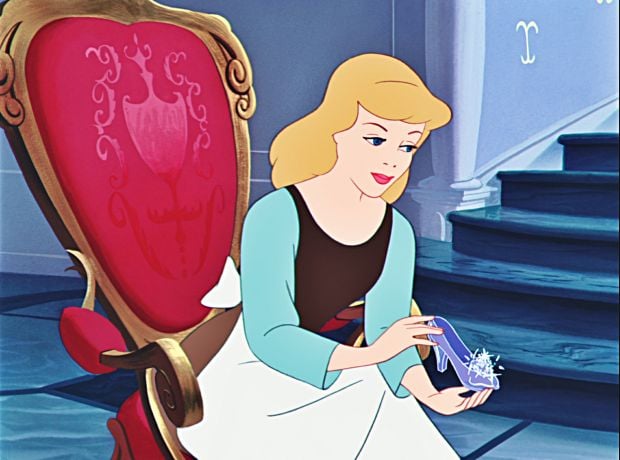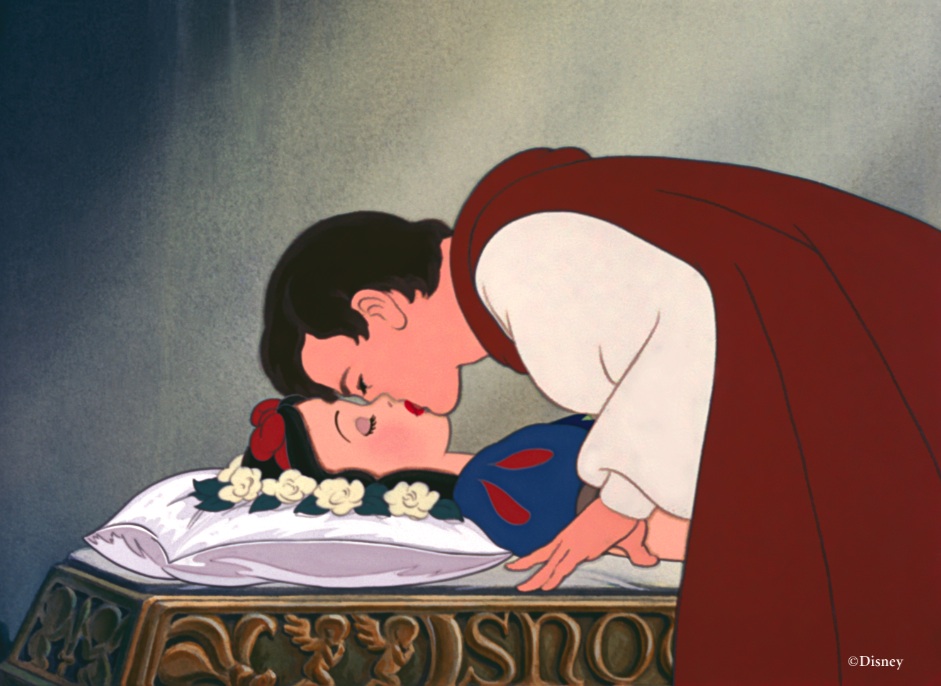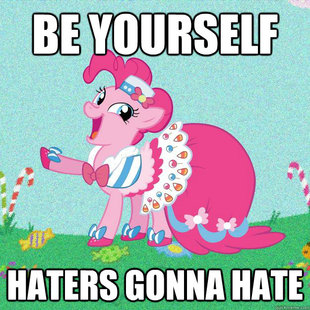Disney – and in particular their pantheon of princesses –
has been getting a lot of hate lately
for being “chauvinistic”, anti-woman and generally bad for little girls. This isn’t anything new, however; people have been accusing the
Disney princesses of having a negative effect on little girls for years now.
Now, granted, I’d hardly agree with every choice the company’s made (“Atlantis: The Lost Empire” remains a cinematic atrocity), but I think it’s massively unfair to throw all of the Disney princesses out the window as being bad for little girls to watch. Why?
First off, I believe that, if one looks for it, one can find a lesson that is true, good, and beautiful in just about anything. But beyond that, I have this crazy theory that I want to share with you. Are you ready? Good.
My theory is thus: every Disney princess film contains a valuable lesson. Sometimes it's a lesson intended for all girls everywhere and sometimes it's a lesson for a very specific type of girl. Some might argue that these lessons were placed in the films intentionally, while others might argue it's simply coincidental (although I think this is probably naive).
Either way, the lessons are there and most of the time they're too awesome to ignore. I’ve compiled a little summary of each of the Princesses complete with (to be fair) the arguments against them and the moral lesson I believe each attempts to present. But keep in mind that there may be many more lessons in each film than the ones I mention below. Take a look at the ones I provide, then post any other lessons that occur to you in the comments section.
Either way, the lessons are there and most of the time they're too awesome to ignore. I’ve compiled a little summary of each of the Princesses complete with (to be fair) the arguments against them and the moral lesson I believe each attempts to present. But keep in mind that there may be many more lessons in each film than the ones I mention below. Take a look at the ones I provide, then post any other lessons that occur to you in the comments section.
The Accusation: “Sleeping Beauty teaches
little girls to be innocent and stupid, that love-at-first-sight exists, and it
sets them up to have their hearts broken.”
My Defense: Aurora (Sleeping Beauty) may come
off a little shallow, true. She falls in love with her prince after only 5
minutes. However, she is no more naïve than her prince, who feels the same way.
Their innocence is actually a valuable
lesson. Far from the cynical worldview of their political parents, these
two lovers are able to find love by ridding themselves of worldly things (the
castles and such) and turning to the simple life of the woods. When their love
is challenged, Philip must defend it with “the sword of truth and the shield of
virtue”, as these are the keys to innocent love as God intended. I fail to see
how a “shield of virtue” is anything but a BA lesson for boys and girls
everywhere.
Moral of the Story: Essentially, I see
Sleeping Beauty as a call to return a sense of innocence, purity, and virtue to
romance. Romance in our culture has been permeated with cynicism and distrust
and everybody could do to reintroduce a little purity and Disney-like trust
into their relationship.
The Accusation: “Jasmine starts out strong
and independent, but ends up selling out to a man who lies to her. Mulan
abandons her femininity totally and ends up with a jerk. Oh, and Pochahontas is just a stupid movie”.

 My Defense: I’m going to go ahead and lump Mulan,
Jasmine, and Pochahontas together because they each teach similar lessons. Each
coming from a patriarchal and strongly chauvinistic culture, they each teach
their respective audience how to find competitive strength without ridding
themselves of femininity, a valuable lesson in this day and age. Jasmine does
this with her wit, Pochahontas with her fortitude and courage. Now, you might
be arguing that Mulan has to shed her femininity; however, one must remember
that she is only able to defeat Shan Yu when she embraces her womanly strength
and dignity. As to Aladdin “getting the girl” by feigning charm, good looks,
and appearing to be rich and famous, remember that Jasmine initially dismisses
him for exactly these qualities. She eventually falls for him because of his
loyalty and spirit of self-donation and sacrifice. The story of Aladdin is not
one in favor of deceit. It is instead one which flies in the face of an
ever-rampant class system and hostility to love-marriages that is just as extreme and awful today as it every was.
My Defense: I’m going to go ahead and lump Mulan,
Jasmine, and Pochahontas together because they each teach similar lessons. Each
coming from a patriarchal and strongly chauvinistic culture, they each teach
their respective audience how to find competitive strength without ridding
themselves of femininity, a valuable lesson in this day and age. Jasmine does
this with her wit, Pochahontas with her fortitude and courage. Now, you might
be arguing that Mulan has to shed her femininity; however, one must remember
that she is only able to defeat Shan Yu when she embraces her womanly strength
and dignity. As to Aladdin “getting the girl” by feigning charm, good looks,
and appearing to be rich and famous, remember that Jasmine initially dismisses
him for exactly these qualities. She eventually falls for him because of his
loyalty and spirit of self-donation and sacrifice. The story of Aladdin is not
one in favor of deceit. It is instead one which flies in the face of an
ever-rampant class system and hostility to love-marriages that is just as extreme and awful today as it every was.
Moral of the Story: Each of these
Princesses are a shout out to the little girls of different chauvinistic,
woman-repressing cultures. The movies teach little girls to rebel against their
bigoted systems, embrace their feminine genius, and love whoever-the-heck they
want to love.
 3. Beauty & the Beast
3. Beauty & the BeastThe Accusation: “Beauty & the Beast is – at best – the story of an abusive relationship and – at worst – a nerdy girl’s exploration into bestiality (um, ew?)”
My Defense: The Beast (Adam) may seem to be
a difficult character to defend, but let’s first look closer at the target
audience of this movie. “Beauty and the Beast” is geared towards girls like
Belle: bookish girls, the ones you see falling in love with characters they’ve
only read about on a page (hello, twilight fan-girls). The problem (generally)
with this type of girl is that they end up desperately searching for the kind
of guy they read about in those novels. Instead of looking for a guy who has
the chivalrous characteristics of their literary heroes, they turn to muscular
meat heads (cough, Gaston) who can never satisfy their emotional needs. Beauty
and the Beast teaches a girl like Belle to look a little deeper at the guy who,
despite his decided lack of a sixpack, may be her prince charming in disguise.
Additionally, let’s remember that Belle’s attitude doesn’t change as soon as the
Beast becomes kindly disposed to her. She starts to look differently at him
when he attempts to sacrifice his own life for her, defending her from wolves.
Moral of the Story: People should learn to
look past the physical and into the heart of the person, and true love always
requires sacrifice.
 4. Cinderella
4. Cinderella
 4. Cinderella
4. CinderellaThe Accusation: “Cinderella plays the martyr for an hour-and-a-half of screen time and then gets ‘rescued’ by a guy she doesn’t know.”
My Defense: Ok, so Cinderella. This one is
the hardest to defend, because it has the largest target audience: everybody.
However, the lesson is still somehow often missed. This isn’t just a story of
boy meet girl, boy marries girl five minutes later. Let’s remember that it
wasn’t Cinderella’s beauty that won her the prince, but her virtue. In the
ballroom scene, the Prince is surrounded by beautiful women, but he yawns and
is bored by them. It’s only when Cinderella, whose virtue earned the attention
of the Fairy God Mother in the first place, arrives that he sits up and takes
notice. He then goes on a crazy intense hunt for her because she stood out THAT
MUCH. Call it shallow if you like, but I feel that Cinderella is a “Gentleman
Prefer Virtuous Chicks” story (as opposed to “Gentleman Prefer Blondes”), and
that’s a lesson I’ll be happy to share with my future daughters.
Moral of the Story: Virtue makes you more
beautiful than looks ever could and, when the time comes, the right guy will
notice that.
 |
| Does that sound like a bad message? Cinderella sure doesn't think so. |
5. Snow White
The Accusation: Criticisms of Snow White abound. There's the accusation that it's simply an "age vs. beauty" story, as well the familiar criticism that Princesses fall in love with their Princes just too quickly.
My Defense: Snow White is the last one I’ll talk about, but it’s easy to defend: it’s a Christ story. The reason the Prince isn’t much of a character is because he doesn’t have to be. When the story was written, and when the film was made, anyone with any sense would’ve realized “Oh, that’s kinduv like Jesus”. It’s the same reason Aslan doesn’t have a complex backstory. Look at it this way: There’s this innocent girl (man, pre-fall) who lives in the paradise of her father’s castle (Eden) but her stepmother (Satan) is jealous of the love shown to Snow White by her father (God). Out of this jealousy, the stepmother kicks her out of the paradise. Snow White has to venture out into the horrifying woods (the post-fall world), but finds shelter with 7 dwarves (there are lots of connotations with them. One could argue they’re the major prophets, while others argue that they’re the 7 Holy virtues). There is, of course, the added tidbit of Snow White eating a poisoned apple given to her by the Satan character in disguise. Snow White is then resurrected by the son of a King, and taken back to his castle to live with him in paradise. Again, I see this as a great thing to share with my future daughters.
Moral of the Story: Jesus and stuff.
Obviously I can’t write much more without this post becoming excessively long, but keep in
mind that my argument that each Disney Princess is purposely written as a lesson for a certain
type of girl holds true with the other princesses. Rapunzel? A message for an anorexic
generation of girls bullied and subdued into low self-esteem by their mean-girl moms. Tiana? A
love letter to exactly the kind of feminist that normally hates Disney films, telling them that,
with a little openness, their dreams can come true too.
So what about you? What are some good messages you’ve found in Disney films? Let me know
in the comments section.









.jpg)













